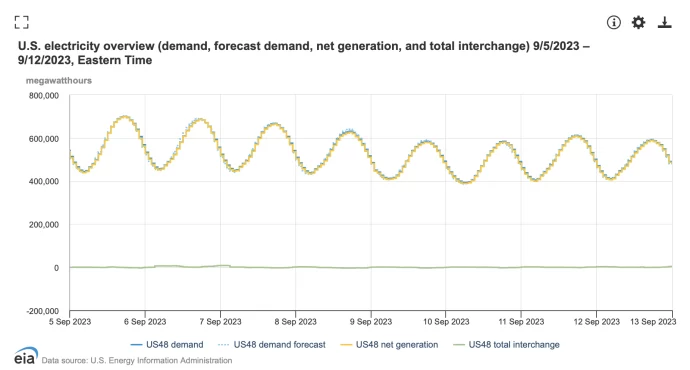#384: Unity’s New Runtime Fee Has Angered Developers, & More
1. Unity’s New Runtime Fee Has Angered Developers

Last Tuesday, Unity informed[1] software developers that it will begin charging a “Runtime Fee” for each new game install, starting on January 1, 2024. Thus far, Unity has monetized[2] its real-time development platform primarily through subscription fees, forgoing the direct monetization of video games created on its platform. This business model differs from Epic Games’ royalty model, which charges[3] a 5% fee on revenue generated from video games created on Unreal Engine once lifetime revenue hits $1 million. Instead of an Epic-like revenue-sharing agreement, Unity is opting for install-based fees, giving creators the upside from increased player engagement.
While its game developer community is displeased,[4] Unity maintains[5] that the new fee will impact less than 10% of its customers. In our view, Unity and its developer community would do well to engage in constructive dialogue around potential harm to solo and indie developers and the risk of fraudulent or malicious game installations.
2. 3D Printing Could Be On The Threshold Of Producing High-Volume Consumer Products

Binder jetting is making headlines.[6] Last week, we learned that Tesla is using binder jetted sand molds from ExOne (now Desktop Metal) machines for prototyping—and potentially for production runs on the giga presses that cast vehicle subframes.[7] This shift could enable Tesla’s design validation costs to be ~97% below that of metal alternatives.[8]
Apple also is considering metal binder jetting to produce its stainless steel watch frames, aiming to lower material waste and decrease time to production.[9] While Apple does not disclose its supplier base, we do know that Foxconn and a number of other Asian companies have developed expertise in metal binder jetting, as have western players like Markforged, Desktop Metal, and Hewlett Packard.[10]
After years of prototyping and low volume runs, producing end-use parts at high volume would be a major breakthrough for 3D printing. In 2022, Apple sold roughly five million stainless steel frame watches, and Tesla intends to produce millions of cars a year.[11] ARK’s thesis is that end-use parts present the largest market opportunity for 3D printing, potentially growing the industry ~40% at an annual rate during the next four years, from ~$17 billion in revenues this year to ~$70 billion in 2027.[12]
3. The Current Electricity Grid Is Likely To Support Mass Market Adoption Of Electric Vehicles

Although concerns have evolved that the US electricity grid will be overwhelmed if electric vehicle (EV) sales continue to scale, ARK’s back-of-the-envelope math suggests otherwise. Annual “US vehicle miles traveled” is ~3.26 trillion miles,[13] or ~9 billion miles per day. If an EV can travel ~4 miles per kWh,[14] then the grid would need to provide 2.25 billion kWh per day to power all ~285 million vehicles registered in the US.[15] The electricity curve shown below gauges the degrees by which electricity supply and demand change during the day. If electricity were used to charge EVs during non-peak hours, that is, if the troughs were raised to the peak level, the curve would flatten, and kwh would increase by 2.9 billion— ~30% more than the 2.25 billion kWh needed to power the entire US vehicle fleet.[16]

Source: U.S. Energy Information Administration. 2023. “Hourly Electric Grid Monitor.” Data as of 9/15/23. For informational purposes only and should not be considered investment advice or a recommendation to buy, sell, or hold any particular security. Past performance is not indicative of future results.
Of course, the grid is evolving constantly, and the vehicle fleet will take time to transition. Even if EV adoption were to approach 100% of new auto sales, for example, the time necessary to transition the entire vehicle fleet would be more than ten years, leaving plenty of time to upgrade the grid if our estimates are off.
[1] Unity Technologies. 2023a. “Unity Plan Pricing and Packaging Updates.”
[2] Unity Technologies. 2023b. “Plans and Pricing.”
[3] Unreal Engine. 2023. “Licensing Options.”
[4] Totilo, S. 2023. “Unity rushes to clarify price increase plan, as game developers fume.” Axios.
[5] Unity Technologies. 2023c. “We want to acknowledge…” Twitter.
[6] For more information on binder jetting, see ExOne. 2023. “What Is Binder Jetting?”
[7] Shirouzu, T. 2023. “Tesla reinvents carmaking with quiet breakthrough.” Reuters.
[8] Shirouzu, T. 2023. “Tesla reinvents carmaking with quiet breakthrough.” Reuters.
[9] Gurman, M. 2023. “Apple Tests Using 3D Printers to Make Devices in Major Manufacturing Shift.” Bloomberg.
[10] Sertoglue, K. 2022. “Foxconn and Triditive Partner To Develop New Metal Binder Jet 3D Printer.” 3D Printing Industry.
[11] Sellers, D. 2023. “Apple Watch Dominates The Market With 50 Million Units Sold In 2022.” Apple World Today. Gurman, M. 2023. “Apple Tests Using 3D Printers to Make Devices in Major Manufacturing Shift.” Bloomberg.
[12] Hubs Protolabs. 2023. “3D Printing Trends Report.”
[13] U.S. Department of Energy. 2023. “Annual Vehicle Miles Traveled in the United States.” Alternative Fuels Data Center, citing data published by the Federal Highway Administration Monthly Traffic Volume Trends Report.
[14] Inside EVs. 2023. “Tesla Model 3: Efficient On Paper, But Really Depends On The Driver.”
[15] U.S. Department of Energy. 2023. “Vehicle Registration Counts by State.” Alternative Fuels Data Center.
[16] This assumes that current solar and wind can’t generate more electricity due to its intermittency.


